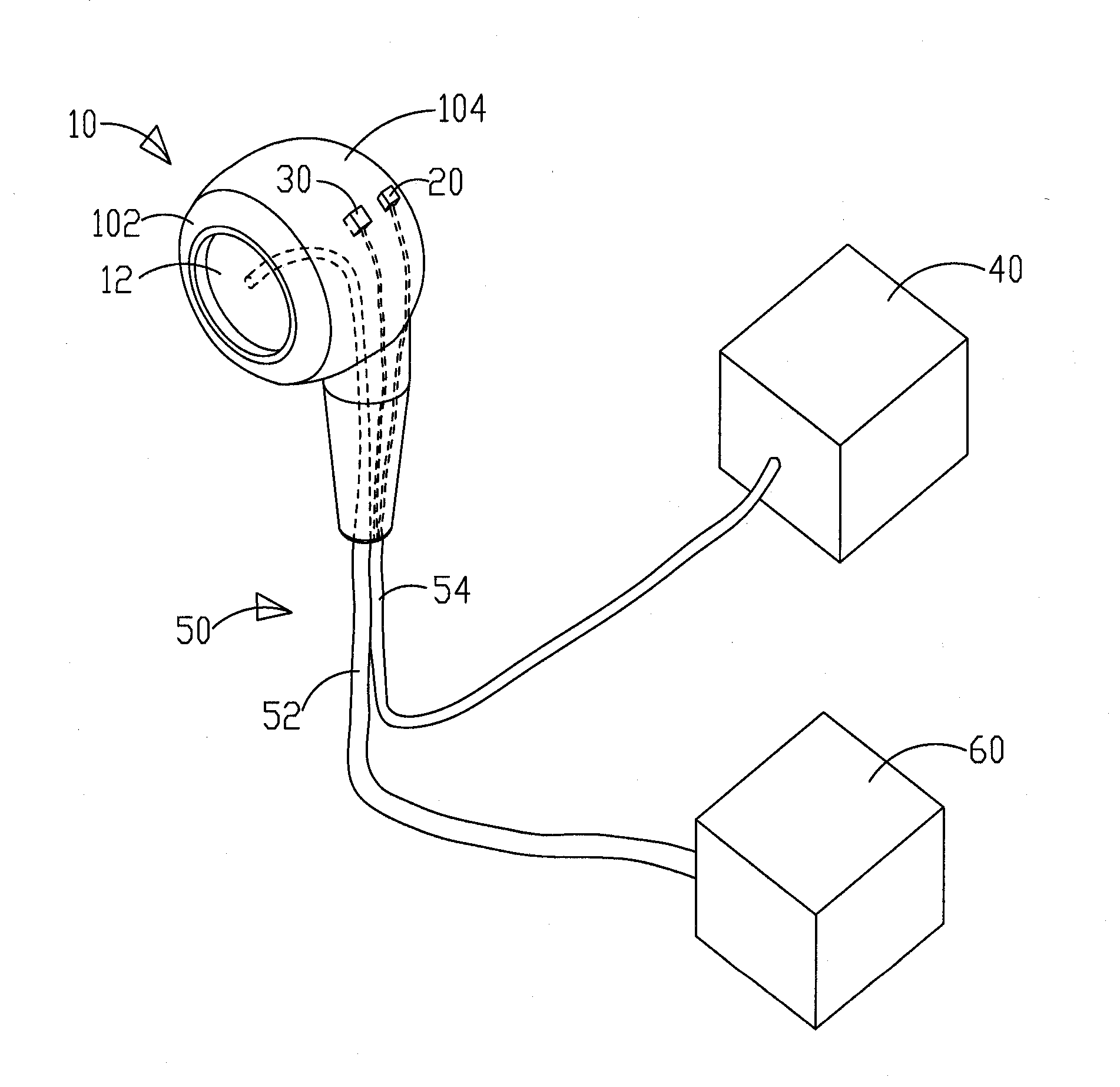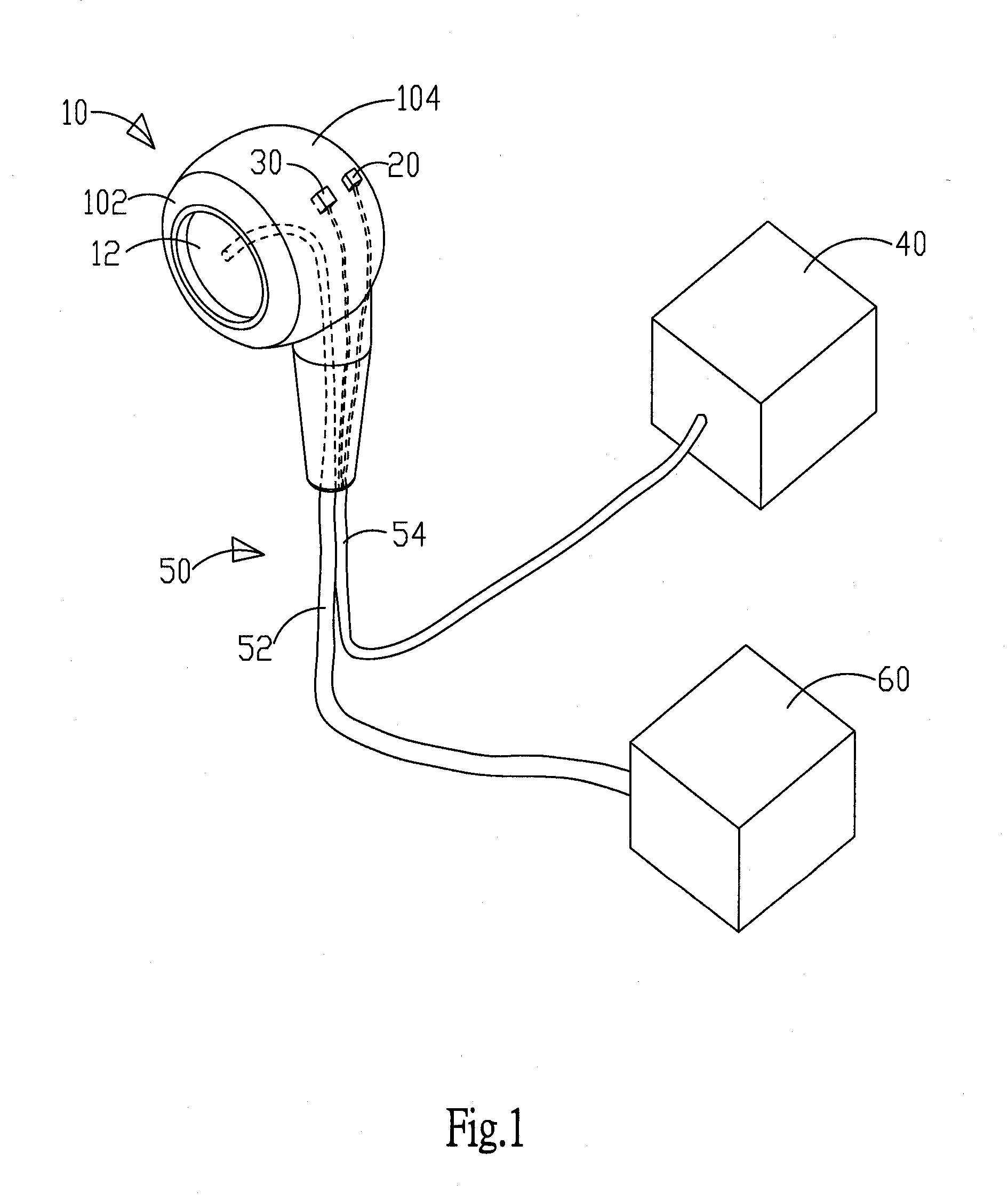Apparatus for measurement of heart rate variability
a heart rate variability and heart rate technology, applied in the field of measurement, can solve the problems of increased energy expenditure of sympathetic nervous system patients, increased risk of heart disease for patients with reduced heart rate, and irregular heart rate, so as to achieve the effect of measuring the heart rate variability of patients and patient patients
- Summary
- Abstract
- Description
- Claims
- Application Information
AI Technical Summary
Benefits of technology
Problems solved by technology
Method used
Image
Examples
Embodiment Construction
[0020]FIG. 1 and FIG. 2 are diagrams showing the apparatus for measurement of heart rate variability alone and when being inserted into a patient's ear according to one embodiment of the invention. The apparatus includes a main body 10, a light source 20 and a sensor 30. The main body 10 is to be inserted into the patient's ear and includes a speaker 12. The light source 20 is disposed on one side of the main body 10 for emitting light projected onto the skin of the patient's ear. The sensor 30 is disposed on the same side of the light source 20 on the main body 10 and receives a reflection light from the skin of the patient's ear. A sensing signal is transmitted by the sensor 30 to an analyzer 40 for measurement of heart rate variability.
[0021]The main body 10 includes an insertion portion 102 and a container portion 104. The insertion portion 102 is to be inserted into the patient's ear 70. The speaker 12 is disposed in the insertion portion 102. The light source 20 and sensor 30 ...
PUM
 Login to View More
Login to View More Abstract
Description
Claims
Application Information
 Login to View More
Login to View More - R&D
- Intellectual Property
- Life Sciences
- Materials
- Tech Scout
- Unparalleled Data Quality
- Higher Quality Content
- 60% Fewer Hallucinations
Browse by: Latest US Patents, China's latest patents, Technical Efficacy Thesaurus, Application Domain, Technology Topic, Popular Technical Reports.
© 2025 PatSnap. All rights reserved.Legal|Privacy policy|Modern Slavery Act Transparency Statement|Sitemap|About US| Contact US: help@patsnap.com



